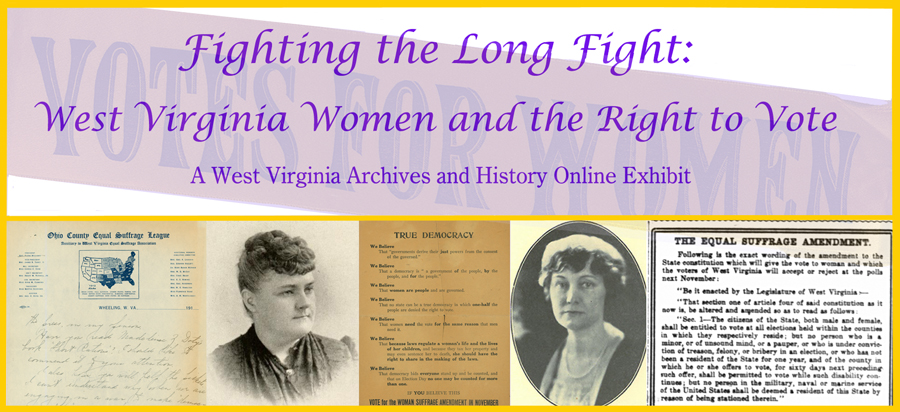
 July 31, 1914
Name. West Virginia Equal Suffrage Association. Plan of organization adopted by the State Convention of the Equal Suffrage Association of West Virginia held July 30, 1914. The object for which every suffragist must work s the submission of an Equal Suffrage amendment to the voters of the state and the subsequent adoption of such amendment. To this end we plan to effect the following order of organization in the State of West Virginia. The State organization shall consist of a president, vice president, two secretaries, treasurer, two auditors and a state organizer. These officers are to be elected at the annual state convention. Those elected July 1, 1914, are to serve until November, 1915. The state committee shall consist of the state officers and presidents of all organized counties and the chairman of all standing committees appointed by the state officers. The officers of the county shall be president, secretary and a treasurer. When ten enrolled believers have been secured in any county the leader appointed by the state president shall call a mass convention for the purpose of organization. Any county so organized may become a part of the state organization upon the payment to the state treasurer at the rate of ten cents per member and shall be entitled to elect delegates to the state convention. The president of any county is responsible for the suffrage activities of her county. She should ascertain the boundaries of the districts which compose her country [sic]; second, appoint a leader for each district, who shall by virtue of her office be a member of the county committee; third, call a convention of any district when ten suffragists have been enrolled in that district and they are to elect a leader. The officers of the district shall be chairman, secretary, and treasurer as provided in the county organization, whose duty it shall be to educate the district for Equal Suffrage, that when the referendum of the state equal suffrage amendments occurs, the district will be carried by the amendment; second, to make the suffrage question a live issue in the district by various means of propaganda; third, to enroll all believers, without dues, securing signatures of both men and women; fifth, to arouse interest by holding meetings, securing hearings and distributing literature. |